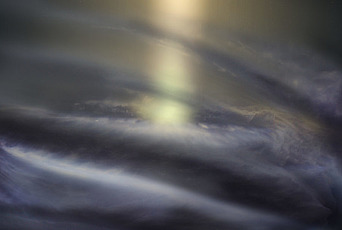Simulating Milky Way’s Central Black Hole
What would it be like to live next to a supermassive black hole? While difficult to imagine, a recent simulation modeling the central region of the Milky Way galaxy tells a fascinating story that can be safely enjoyed from the Earth 26,000 lightyears away.
Jim Stone, a computational astrophysicist and Professor in the School of Natural Sciences, along with Sean Ressler and Chris White from UC Santa Barbara’s Kavli Institute for Theoretical Physics and Eliot Quataert from UC Berkeley, conducted a study investigating the magnetic properties of the accretion disk surrounding the Milky Way’s central black hole, known as Sagittarius A* (Sgr A*). This work has since been published in Astrophysical Journal Letters.
The team was specifically interested in determining whether or not the black hole’s magnetic field, generated by in-falling matter, could build up to the point where it briefly chokes off the accretion flow—a condition scientists call “magnetically arrested.”

The immediate neighborhood of Sgr A* consists of about 30 Wolf-Rayet stars, which shed tremendous amounts of material and produce turbulent solar winds. By studying this group of stars, the team was able to trace the material consumed by the black hole back to its source.
The model confirmed that Sgr A* could become magnetically arrested despite a relatively quiet galactic center. This work has wide implications for the study of black hole dynamics and other cosmic phenomena that exceed human timescales. The Event Horizon Telescope collaboration, which employed such simulations to produce the first image of a black hole, has since reached out to the team to obtain its simulation data.
Jim Stone joined the Faculty of the IAS School of Natural Sciences last year. His development of influential codes and his innovative approach to modeling complex astrophysical systems continues to shape the field and contribute greatly to our scientific understanding of the universe.
Read more at Phys.org.


